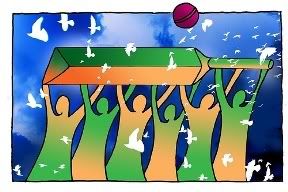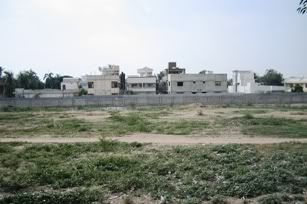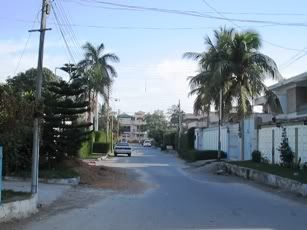Owais Mughal
 One of the reasons that made (note the past tense here) Pakistan the greatest cricket nursery of the world was the fact that cricket was played in every street, every park and every free space of every city.
One of the reasons that made (note the past tense here) Pakistan the greatest cricket nursery of the world was the fact that cricket was played in every street, every park and every free space of every city.
When I was growing up, every street in our neighborhood had a junior cricket team and a senior cricket team. These street teams used to compete with each other on a regular basis. The talent from these teams then went on to play club cricket with hard-ball. The club cricketers then played zonal league organized by KCCA (Karachi City Cricket Association) and so on and so forth. I am sure other cities of Pakistan had similar set-up too.
What prompted me to this write-up was a sudden memory of a street team in our area. It was called Khandan XI (khandaan means family) and no local tournament was complete without this teams’s participation.Â
 Khandaan XI got its name from the fact that all of its players were cousins to each other. Not only that, but the whole team used to live in a single house. Joint family system was rampant twenty years ago. Children were in no dearth; therefore every house in the area was capable of fielding a cricket team of its own. I remember a Anwar Masood sher which gives the philosophy belief of that time:
Khandaan XI got its name from the fact that all of its players were cousins to each other. Not only that, but the whole team used to live in a single house. Joint family system was rampant twenty years ago. Children were in no dearth; therefore every house in the area was capable of fielding a cricket team of its own. I remember a Anwar Masood sher which gives the philosophy belief of that time:
amal bahbood-e-abaadi pe kar ke dekh lo tum bhi
tumhari dasataaN tak bhi na ho gi dastaanoN meiN
Khandaan XI definitely had a long ‘dastaaN’ (tale) of family members. Another reason behind Khandaan XI nomenclature was the names of team members which all ended in aan-like sounds e.g.
Kamran, Rehan, Irfan, Salman, Kashan, Umrao Jan, hairan, pareeshan and thus the Khandaan
Khandan XI was a natural result of a lot of inter-marriages that happened in a single family.  Therefore healthy genes were in short supply and some of the team members openly drooled saliva when angry. Some team members had squint in their eyes and others had clear IQ problems.
Therefore healthy genes were in short supply and some of the team members openly drooled saliva when angry. Some team members had squint in their eyes and others had clear IQ problems.
In the photo to the right, third house from left is where whole Khandaan XI resided. I took this photo from our rooftop.
Despite all these worldly defects; one gene did run abundant in the family; and that was the gene of cricket playing acumen. Khandaan XI played cricket the hardest, the best and it was the most difficult team to beat.
During all my childhood cricketing life, our team used to think of schemes on how to break the unity in Khandaan XI. Some of their team (and family) members were even offered captaincy of other teams but to no avail.
Major catastrophes hit this team but couldn’t break its unity. The only time I remember actually beating Khandan XI was when we got a walk-over. Our team was playing a Ramzan cricket match against them. It was an 8-overs a side game. Every ball was crucial and in the first over Khandan XI’s bowler threw 5 maiden bowls. While he was coming to bowl his 6th ball, he got hit by a passing motorcycle and broke his nose. We were playing on a street and thus traffic passed regularly.  The match was immediately called-off as we arranged for sending this player to the hospital. Later on we learnt that Khandan XI has forfeited the match in our favor. We finally got 4 points against them.
The match was immediately called-off as we arranged for sending this player to the hospital. Later on we learnt that Khandan XI has forfeited the match in our favor. We finally got 4 points against them.
The photo to the left shows the street where this match was being played in which we got walkover against Khandaan XI. Year was 1983.
Many years have passed since I last played against the mighty Khandaan XI. I wonder how they may have evolved since then. All those ‘khandaani’ players that I grew up with are now working and at different stages of career. I am sure there must have been more inter-marriages and genes of playing cricket may still be running high in the family.
I wonder if they all still fit in a single house. I also wonder if their children are still getting traditional aan names.
Credits: First two photos are taken from flickr.com. Clicking on these photos will take you their source websites



















































Faisal
i know bowlers who bowled ‘finger’ with tape ball very well. I never learnt the art myslef even though i tried for many years. I went for pace and bowling finger while trying to generate pace were very difficult. Nadeem Moosa who is considered ‘father of finger’ was also a slow orthodox.
I remember it took street cricket by storm in 80s. Every bowler wanted to learn how to bowl ‘finger’ and it was indeed the most difficult ball to play.
I am not joking but a bowler in our locality could break tape ball at almost 60-70 degrees by using ‘finger’.
Faisal
You brought back more memories. We also played with tape ball with an opeinig made on the side for swing. We called it ‘jhirri’. Over the years we perfected the use of ‘jhirri’ so much that we used to swing the ball by feet. While batting we used to see bowlers hand and by finding out on which side he has kept the ‘jhirri’, we knew in which direction the ball would swing.
We also played with ‘ganji’ ball soaked in water for extra speed. First we burnt tennis ball’s fibres and then used a ‘lota’ full of water at bowlers’ end. bowlers would dip this ‘ganji’ tennis ball in water for extra speed :)
Good old days
Shahran, you made a very close guess. photos are from Block 4, Federal-B-Area.
so i did a google search on tape-ball, “finger” and karachi and look what i found. for a veteran of karachi tape-ball cricket scene, this article is absolutely priceless. additionaly, the article echoes the point made by the author here about innovation of karachi cricket scene feeding the top:
http://sport.guardian.co.uk/cricket/comment/0,,181 8375,00.html
…Nazimabad, a middle-class area in Karachi’s north that is home to a rich, cut-throat, high-quality cricket culture, is widely accepted as the focal point of the tape ball. So when and how did it begin?
The experience of the left-arm spinner Nadeem Moosa, a first-class cricketer in the mid-1980s, offers a credible starting point. He is more celebrated as a tape-ball player. Having played with a bald tennis ball for years, Moosa developed the “finger” ball. Delivered from a subtle bastardisation of Jack Iverson’s unique grip, the tennis ball additionally squeezed to offer sharper top spin and break, Moosa was, in his own modest words, “unplayable” for years. Cricket then did what it does, taking from bowlers and giving to batsmen. Moosa’s contemporaries decided that covering the ball with tape would make it harder to squeeze, preventing the finger ball. So the tape ball was born in 1984, since when its use has burgeoned. Rashid Latif, the former Pakistan wicketkeeper and captain, claims “70% of all cricket is now tape ball”.
The slow death of school cricket helped. While Mushtaq Mohammad, Javed Miandad and Imran learnt as much in school as on streets, much of today’s generation have no choice but to play tape ball in their mohallas (localities). Lack of space and grounds, particularly in Karachi, has further propelled its ubiquity.
Sorry, p.23/12.